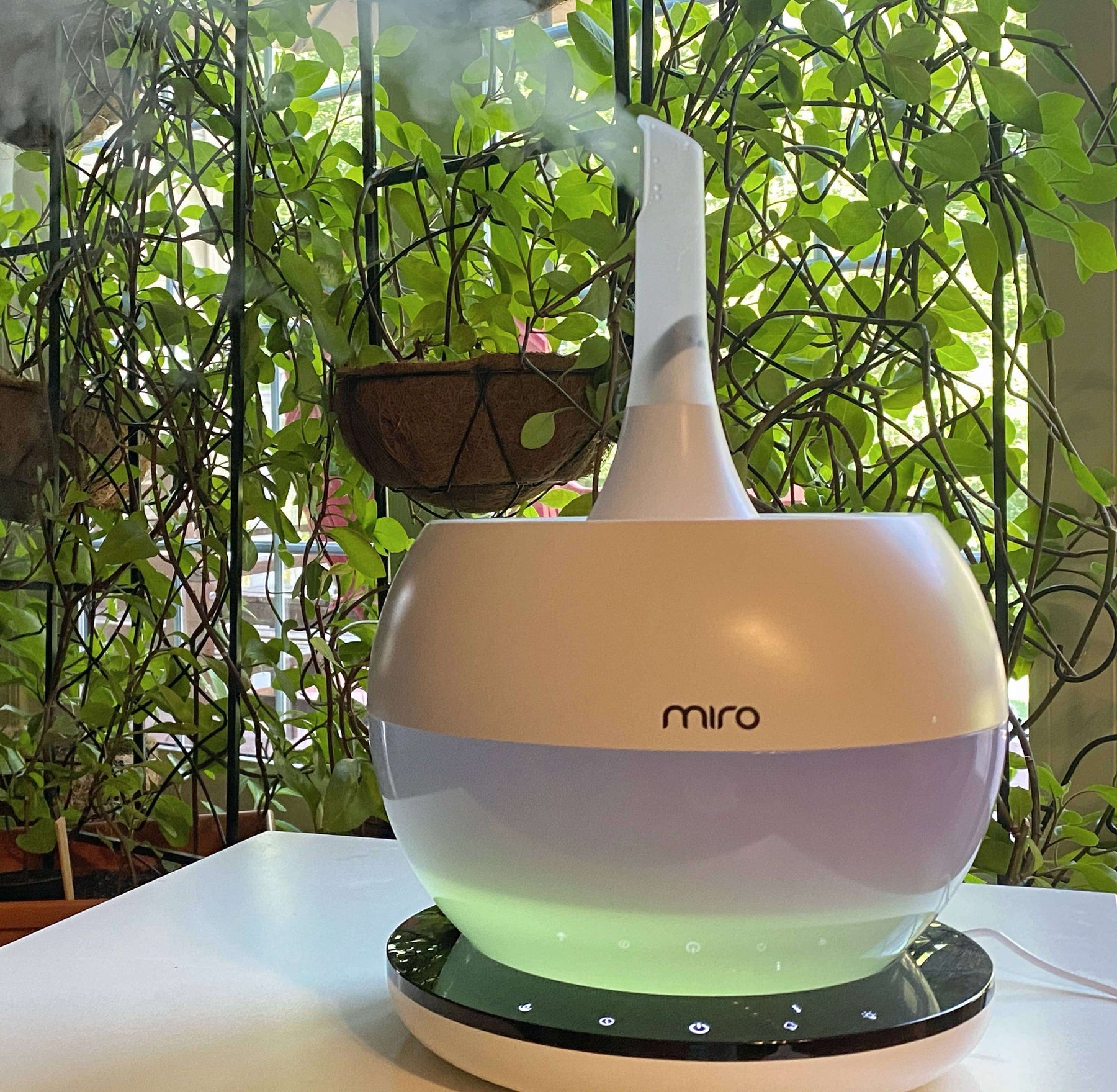
Using Humidifiers for Healthy Plants
Indoor plants are finicky, it is too easy to give them too much or too little. Whether it be the room temperature, the lighting, or the air quality - plants are picky. Different plants have different needs. Some are very sensitive while others are hardy and can last without much attention. Regardless, humidifiers can be a huge benefit in increasing the longevity of your plants and nurturing their growth.
Humidity Relative To Temperature
Generally, the higher the temperature is in the air, the more water vapor there is. If you have ever walked into a thriving greenhouse, more often than not you are met with warm, humid air. This is because plants that require higher humidity also require higher temperatures. So, when the temperature is cooler, then the humidity also tends to be lower.
Different outdoor environments lead to different indoor environments. It is important to be aware of the environment that you live in so that you can adjust accordingly for your plants. For example, a desert will have hot air and low humidity because of low water availability. Places like this include states such as California and Nevada. With the air conditioning cranking, moisture in the air is removed by the air conditioning system. Similarly, when leaving the heat on in the colder months, the relative humidity drops because certain heating systems also remove humidity in the air.
Why Higher Humidity Is Good For Plants
Much like all other organisms, plants have evolved to survive in their natural environments. This changes their structure and their needs. Plants that have adapted to high humidity have reduced the amount of water their leaves can hold. Some plants also do not have extensive root systems which means that they don’t pull much water from the soil. Plants that fall under the epiphytes category will even absorb all the water they need from the air around them, which results in them needing higher humidity in order to survive.
The relative humidity in the average home is usually below 30 percent. Most houseplants, even desert natives such as cacti, prefer higher humidity levels of at least 40 percent. Orchids need a humidity range between 40 to 70 percent, ferns prefer anywhere between 40 to 50 percent, and most other house plants need a humidity level between 40 and 60 percent. To keep a comfortable balance with you and your plants, the recommended humidity is 50 to 60 percent.
You can usually tell when a plant needs increased humidity if the leaves are curled or the tips of leaves are dry. Flower buds are particularly sensitive and will turn brown or fall off when humidity is too low.
Using A Miro Humidifier For Your Plants
Miro Humidifiers are cool mist, which means that they use a fan to produce a fine mist that adds moisture to the air. Cool mist humidifiers are more energy-efficient and can run for longer periods of time, making them suitable for plants.
For plants in your home, there some things to consider so that you can create the best environment possible:
- Time - at least 12 hours of run time within the span of 24 hours. A larger tank would be more efficient since you wouldn't have to refill as often. Miro humidifiers also have a timer setting with auto shut off, so you can leave the humidifier on without having to worry about turning it off. Your Miro Humidifier will also shut off and alert you when water in the tank is too low.
- Sound - Considering how the humidifier needs to be running for long periods of time, they can become noisy and annoying. Miro humidifiers come with add-ons that allow you to reduce noise level and drip.
- Amount of mist - Miro humidifiers are adjustable, so if you need to add moisture to the room quickly or have a larger room, you can increase the mist output to suit you and your plants’ needs.
- Where to put your humidifier - placing the humidifier too close to plants may end up doing more harm than good, but placing the humidifier too far from them could mean that your plants are not getting the moisture they need. The recommended distance is about three to six feet away from your plants.
Maintaining Your Humidifier
To ensure the longevity of your humidifier, it is recommended to use distilled water. Tap water may cause a buildup in the humidifiers mist making system, which can damage it over time.
Over time, mold and debris can build up in your humidifier and bugs will lay eggs. This poses a threat not only to the plants but to your health. To keep your Miro humidifier in working condition, you can simply take it apart and watch each component in the sink with dish soap and water. Cleaning your Miro humidifier is a quick and simple process, which will keep you and your plants healthy.
